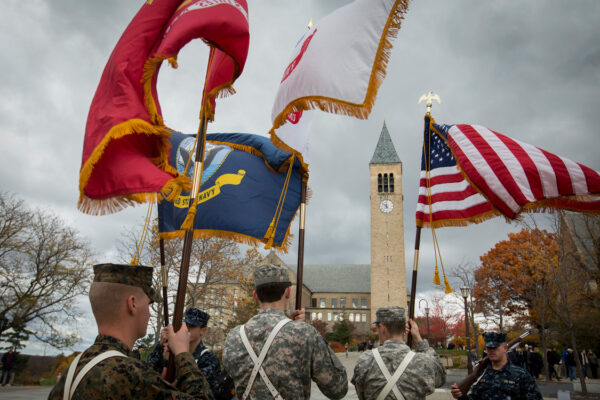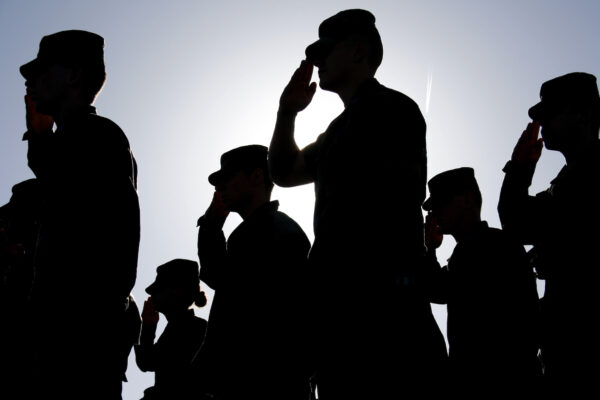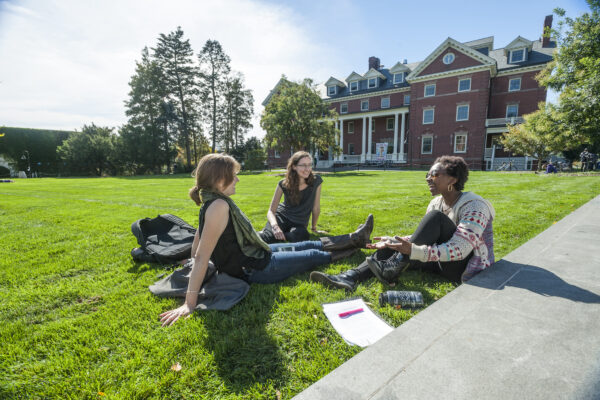Tanya Ang and Dani Molina look at what it takes for today’s student veterans to succeed in college.
Following on the heels of the end of Operation Iraqi Freedom in 2011, the recent end of U.S. combat operations in the Helmand province of Afghanistan on Oct. 26 is another reminder of the massive military drawdown in that region. To add to the scale-down of military operations abroad, the U.S. Armed Forces have been reducing their ranks back home, many through involuntary separations or early retirements. In all, it is estimated that five million Post-9/11 service members will have left the military by 2020.
It is also expected that many of them will seek to enter higher education, given the generous educational benefits offered through the Post-9/11 GI Bill.
Since it was first offered in 2009, Americans have spent over $42 billion helping to finance the education of Post-9/11 GI Bill recipients, which also includes active duty personnel and dependents. For those who take advantage of these benefits, costs covered typically include tuition and fees, a monthly housing allowance, and an annual stipend for books and supplies.
Given this huge investment in veterans’ postsecondary education, one could argue that veterans who use this generous benefit are in a good position to enroll in college and ultimately earn a postsecondary certificate or degree.
And some do. A recent study from the Student Veterans of America (SVA) found that roughly half (51.7 percent) of veterans who used their educational benefits earned a certificate or postsecondary degree between 2002 and 2010. However, research has yet to determine what factors lead veterans to initially enroll in college and complete their certificate or degree. And for veterans who didn’t finish college, what were the barriers to their success?
To gain a better understanding of undergraduate student veterans and factors related to their college experiences, ACE’s Center for Policy Research and Strategy (CPRS) recently analyzed U.S. Department of Education (ED) data from the 2011-12 academic year. The goal of analyzing this federal dataset was to paint a clearer picture of student veteran characteristics that might facilitate or impede their success in college.
One of the most interesting findings reveals several characteristics that could place veterans at risk of not staying in college or accomplishing their academic goals. ED has identified several “risk factors” that may adversely affect a college student’s persistence and degree attainment, including:
-
delayed enrollment
-
no high school diploma
-
part-time enrollment
-
financial independence
-
having dependents
-
single-parent status
-
full-time employment
Among veterans, 44 percent were found to have four or more of these risk factors.
Although more research is needed to understand precisely why veterans ultimately do or do not succeed, the overall findings demonstrate that student veterans may be at substantial risk of dropping out of their postsecondary programs. In addition to the traditional risk factors, many veterans must also deal with transitioning out of the military, mental health issues, or other combat-related trauma. And although some of the challenges student veterans face are similar to other non-traditional students, their military experience sets them apart.
Even more questions abound from these findings: If veterans have some risk of not succeeding in college, what can we learn from those who do complete their postsecondary programs? What policies and practices are in place now that best serve this growing, yet understudied, college population?
Given President Obama’s 2020 goal of increasing the proportion of Americans with a postsecondary education, it is vital to better understand how veterans approach higher education. How can institutions and policymakers best serve those who do enter, particularly at community colleges and for-profit institutions, where a clear majority of veterans are in attendance?
Supporting Student Veterans
Through dialogue with key stakeholders, significant research endeavors, and initiatives such as the Success for Veterans Award Grant program, the Veterans Success Jam in 2010, and the Toolkit for Veteran Friendly Institutions, ACE has been able to start the process of answering some of these pressing questions. What we have found is that there is no one right answer, but instead multiple answers based on the individual institution and the needs of their particular military student population.
For example, some institutions have found that the largest need on their campus was a designated veteran-specific space. Others have found success in implementing faculty and staff training, additional support staff in the business and financial aid offices, and priority registration for service members and veterans.
The many ways institutions have successfully met the needs of their military student populations makes it clear that institutions have flexibility in supporting service members and veterans as they work to accomplish their academic goals. Instead of following a specific formula to become military friendly, institutions around the country have demonstrated that creativity is the key.
Through our work with colleges and universities around the country, a few promising practices for serving military and veteran students have emerged. Some of these include:
Gaining top-down support. Support from senior campus leaders demonstrates a high level commitment to helping service members and veterans successfully navigate their academic career.
Creating a task force. A group made up of representatives from the various offices throughout the campus actively involved in serving student veterans will help create a more collaborative effort and reduce redundancy. Some of these representatives might include the school’s certifying official, the financial aid office, the Veteran Services coordinator and a military or veteran student representative.
A centralized point of contact. A central point of contact that is able to build trust and create a good relationship with students has been proven extremely helpful.
Clearly communicated policies and procedures. Clearly communicated policies and procedures help set appropriate expectations and reduce potential frustration.
Student Veterans’ Organizations. Many service members and veterans are interested in connecting with peers who are going through a similar experience. This peer-to-peer support has been found highly effective as they navigate their academic endeavors.
The Toolkit for Veteran Friendly Institutions, a free resource designed to educate institutions on promising practices for better serving military student populations, provides more in-depth detail. It also highlights real-world examples of colleges and universities that are successfully supporting their military and veteran students.
The examples above are just a sampling of recent ACE projects aimed at supporting the transition and postsecondary success of the new generation of military veterans. Similar to ACE’s longstanding commitment to serving veterans in higher education, colleges and universities have also begun to expand and strengthen their services and programs in support of Post-9/11 veterans. According to an ACE study in 2012, over 60 percent of institutions have programs specifically designed to support veterans. Nonetheless, we must all make more efforts to ensure veterans, particularly those most at risk of not succeeding in college, are given the opportunities and tools to complete their desired postsecondary education.
As the number of Post-9/11 veterans in higher education continues to grow in the coming years, future researchers should strive to better understand the profile of veterans and examine how they approach higher education. Given the dearth of data and research on student veterans, ACE’s Center for Policy Research and Strategy and Center for Education Innovation and Attainment will continue to research and share best policies and practices. The millions of Post-9/11 veterans expected in the coming years will undoubtedly want a postsecondary education—and institutions across the country must be ready to support their access and success.
If you have any questions or comments about this blog post, please contact us.


